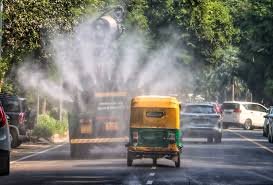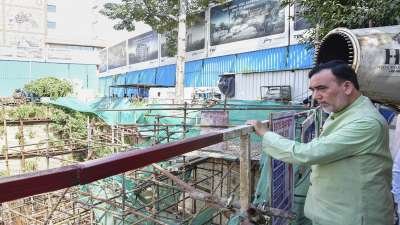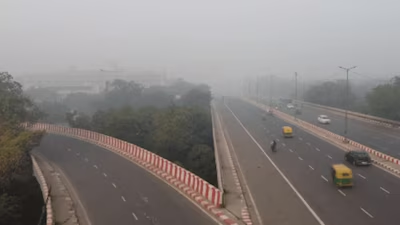The Highlights:
As Delhi battles the severe pollution in the capital city, the civic body has a bold step in controlling air quality. Committees have been formed at all levels after identifying 13 hotspots of pollution that would target these areas. These are part and parcel of the government’s broader strategy to minimize harmful emissions and improve air quality, a special task to enhance air quality during the winter season when pollution peaks.
Reaching out to the Public at Key Hotspots.
It is based on the history of high particulate matter levels of these particular areas, mainly the PM2.5 and PM10, mainly including densely industrial or congested zones. The areas categorized as hotspots include Narela, Bawana, Wazirpur, Rohini, and Okhla, with pollution levels consistently at a higher level than that of the entire city. A committee will monitor each hotspot and be responsible for implementing pollution control measures from regulating industrial emissions to controlling road dust.

Controlling local sources of pollution Special anti-smog guns, dust suppression technologies, and increased patrolling of these zones will help control localized sources of pollution. Furthermore, the government intends to use real-time data to shift its strategies, keeping tabs on changes in air quality at each hotspot by using monitoring systems.
Yamuna River Pollution: Biggest Challenge
Besides air pollution, water pollution is the most potent threat, and its condition remains a contentious issue. The Yamuna river runs through the heart of the capital and is afflicted with untreated sewage as well as industrial effluents. The Bharatiya Janata Party recently leveled gross negligence charges against the AAP government over the state of pollution in the river. Emphasis is being laid on the failure that continues unabated with regard to water contamination, even after a number of cleanup initiatives had been undertaken.

That is not the case with the Yamuna, which extracts heavily from the city of Delhi. It has undergone positive changes in water quality over the years, but there’s a significant residue of several major pollutants that find their way into the river, mostly coming in as untreated wastewater directly from industrial and residential areas. Even with foamy reductions and chemical waste removal efforts being able to cut down on some of these pollutants, the river has gotten worsted, both for aquatic life and the health of its users.
Revitalizing Yamuna: Government Initiatives
The Delhi Government has come out with several initiatives related to rejuvenation of Yamuna. It has installed several STPs and cracked down on illegal waste discharge, but a contradictory impact of such initiatives is muted by bureaucratic delay and complexity while dealing with pollution from multiple sources. The AAP government promised to intensify efforts further, including much more stringent enforcement and heavier fines on violators along with louder pitches and more public warning messages that could reduce household waste from being disposed of directly into the river.
However, the BJP feels that these measures are too little and too late and it is holding the government guilty of populist short-term publicity-like projects rather than long-term solutions sustainable in the future. Political rivalry persisted as one side blamed the other for the increasingly fast deteriorating river.
Glimpses of Broader Concerns in Controlling Pollution
The recent pollution crisis in the capital needs a multi-dimensional approach to have concerted efforts in controlling air and water pollution. While the government stresses on the improvement of air quality, it has also focused on the sources of toxic air-causing—emission from the vehicles and construction dust, among others. Curb on free movement of polluting vehicles, new controls on construction, and awareness programs on open waste burning on reduction have been part of government’s overall pollution control strategy.
In addition, applications such as “Green Delhi,” created with the aim of monitoring the air quality in real-time, motivate citizens to detect pollution sources for the authorities to promptly take measures against the violators. This level of participation is necessary for the activeness of residents in decreasing pollution efforts within their neighborhoods.
Political Connotations of Curbing Pollutants
Pollution management in Delhi has become such an oft-used political battlefield, and the opposition parties squarely attribute the failure of the AAP government to manage this crisis. The BJP has time and again pointed to the prolonged periods of high pollution as one of the evidences of mismanagement by this AAP government, while the latter defends its actions, pointing out the complexity of such an issue and efforts are still being made to improve the situation.
The government, having now taken decisive steps in pollution control measures, can see the results manifesting in the next few months in both air and water qualities. Success in the management of pollution at Delhi, one of the most polluted cities in the world, might go on to become a case study for other Indian cities facing the same environmental challenges.
Conclusion: A Comprehensive Approach Needed
As the city of Delhi embarks upon this fight with its perennial concern, that of pollution, the approach of the city needs to be one of short-term activity and long-term strategic planning. The committees set up by the government to deal with the 13 hotspots of pollution and renewed efforts to clean the Yamuna are a good beginning. The important thing for India’s cities would be long-term political will, strict enforcement, and active citizen participation in making Delhi and all other cities cleaner and healthier.
For Latest News Updates Click Here
